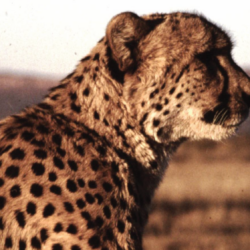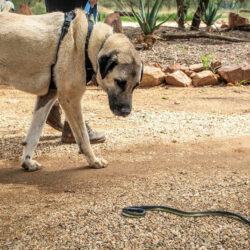Removing Easy Meals for Predators
-
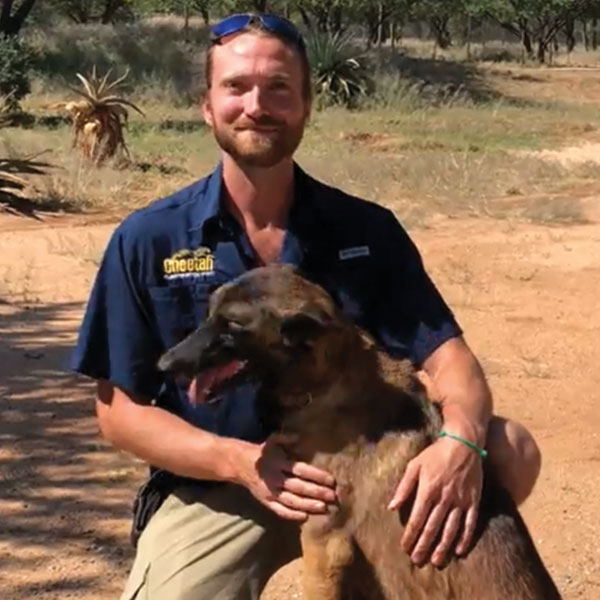
- by Tim Hofmann September 9, 2020
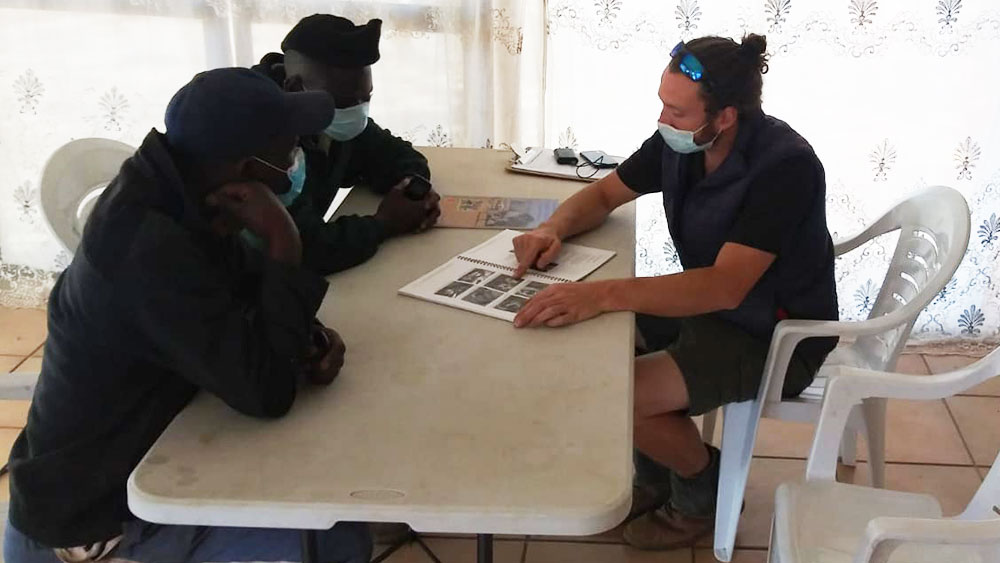
How do you remove an easy meal for a predator? That’s the topic that CCF’s teams discuss with farmers who are experiencing livestock losses due to predators.
CCF’s Community Development Manager Nadja LeRoux recently received a call via CCF’s Farmer Carnivore Help Hotline, a service available to all Namibians that allows farm owners and community members alike to get in touch with CCF staff, to ask for advice with their human-wildlife conflicts. The farmer reported that a leopard was killing calves on his farm close to CCF. After giving some first aid on the phone Nadja suggested a visit by the scat dog team to look for scat of the problem animal and to evaluate the situation on site. I went together with intern Zacharias Lerner and scat detection dog Enyakwa the following day. It turned out that the farm used to be owned by CCF’s long term friend and pilot, Jack. At the farm the team headed out to find the calf carcasses together with the farm manager and two of the workers that had found the dead animals. It seemed as that the incident must have happened some time ago since there were only some bones left.
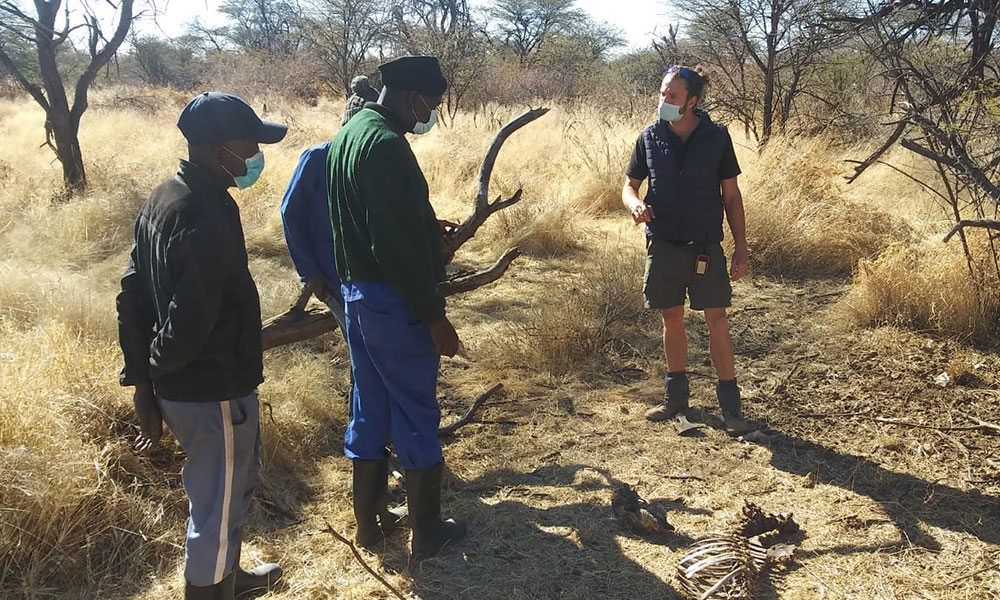
This made it difficult to accurately identify the predator but the story told by the staff and the habitat on the farm suggested that the animals were killed by a leopard. After that, the team kept driving on the farm inspecting the fencing and kraal facilities trying to elaborate measures to keep the livestock safe and thus reduce the conflict. When reaching a kraal close to the farm house the team saw a foal with fresh looking bite marks. While Zach and I were cleaning the wounds that were most likely caused by a leopard the previous night, more severe and deep bites were discovered. Therefore CCF’s veterinarian Paul Set was contacted to also come to the farm and properly treat the wounded animal. While waiting, more measures to mitigate attacks were discussed in the kraal and also using CCF’s Guide To Integrated Livestock and Predator Management.
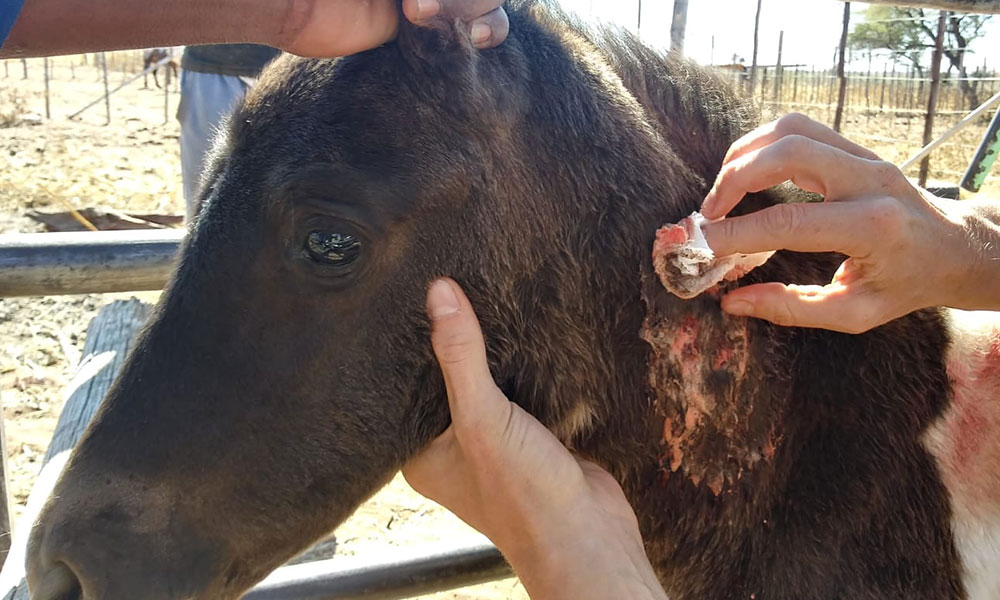
Paul cleaned and stitched the wounds and provided a treatment with antibiotics to preserve the bites from infections. Only after all that did Enyakwa finally get to work. She quickly found several scats from leopard close to the kraal and the surrounding area. A couple of days later Paul and I returned to the farm to vaccinate the adult horses and were happy to see that the calves were now moved to a higher fenced kraal close to the farmer’s dogs. Unfortunately, the young foal did not survive her injuries, despite the teams best efforts. The newly implemented measures seem to work for now as leopard scats and tracks have been found close by but thankfully no new calf losses have been recorded. This is a great win and shows that there are ways to farm in coexistence with predators.
Related Reading
-
December 4, 2024
Double Your Donation for the Cheetah -
June 15, 2024
Snake Aversion Training


